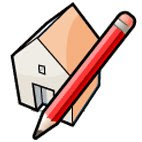Català - Castellano
Rhino is a great tool for designing and modeling complex shaped buildings. We've have recently increased in my office the use of this tool and it is giving results far better than what we could achieve with SketchUp, so expect to get also tips about Rhino once in a while.
I have started lately to get some time to restart my Rhino training and one of the first things I was looking for was a list of commands. The help provided with the program is actually great. For an online list of commands you can go to the McNeel website where the list is reproduced.
This post will be in the future the directory where I will update any commands I find specially important to know when using Rhino.
- BlockManager: Updates and deletes Blocks and linked files.
- FlowAlongSrf: Transforms a group to match any type of curved or flat surface.
- InPlaceBlockEdit: Edits Blocks in Place (requires the Block Editor PlugIn)
- PluginManager: Allows you to load Plugins
- SoftMove: Moves objects according to their distance from a central point.
Show me more...





























